As the chill of winter settles in, indoor plants become a refuge of green, a reminder of nature’s resilience even as the world outside frosts over. For both seasoned horticulturists and those just beginning their plant journey, understanding how to nurture these verdant companions through the colder months is vital. Unlike the predictable cycles of an outdoor garden, indoor plants demand a unique approach to ensure they thrive when the days grow shorter and sunlight becomes a precious commodity.
This guide invites you to discover practical, accessible strategies to keep your indoor plants not just alive, but flourishing during winter’s embrace. Whether you’re a novice eager to keep your first pothos vibrant or a veteran looking to fine-tune your care routine, you’ll find invaluable insights tailored to your experience level. From light adjustments to watering nuances, and humidity hacks to pest prevention, each section is designed to arm you with the knowledge to confidently support your indoor garden through the season. Let’s embark on this journey together, transforming winter’s quietude into a time of vibrant indoor growth.
Reduce Watering Frequency
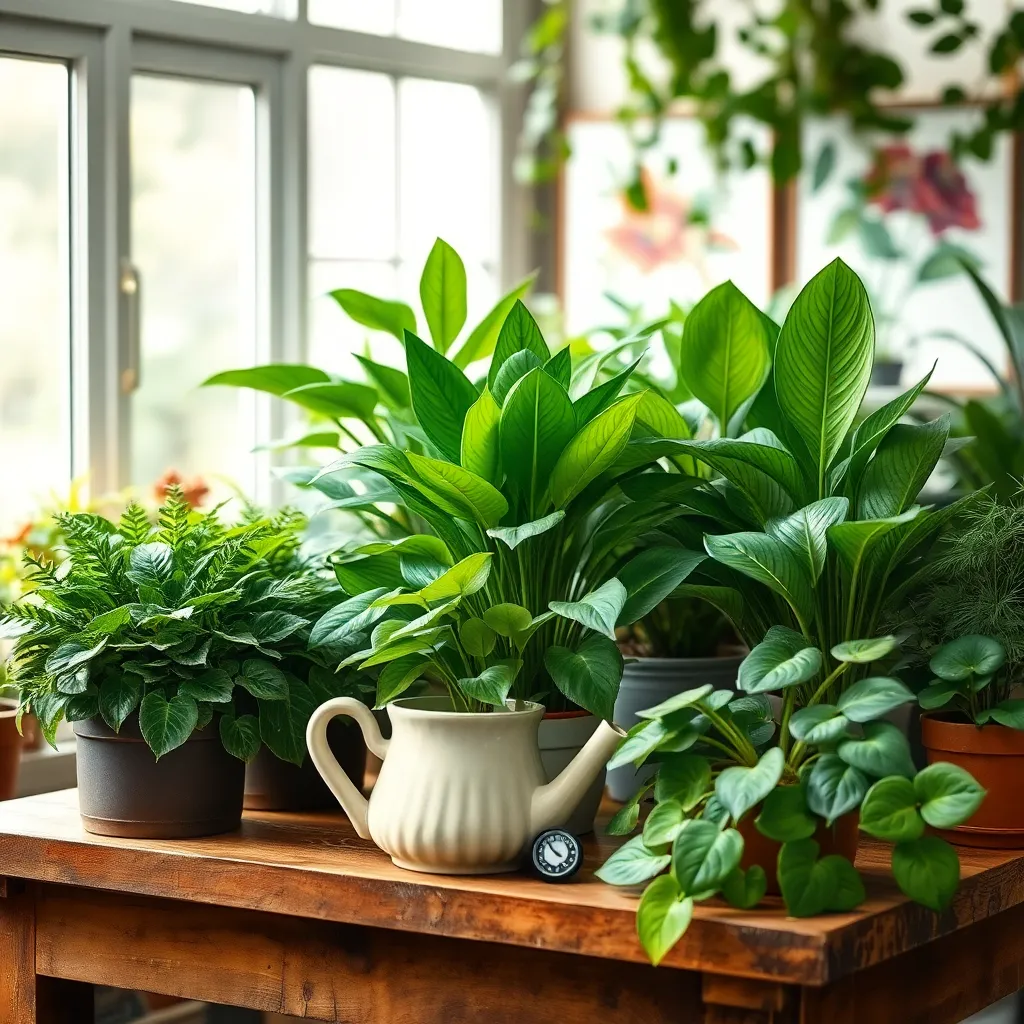
During winter, indoor plants typically require less water due to reduced sunlight and slower growth rates. It’s crucial to understand that overwatering can lead to root rot, so reducing watering frequency is key.
Start by checking the moisture level in your plant’s soil before watering. Insert your finger about an inch deep into the soil; if it feels dry, it’s time to water, but if it’s still moist, wait a few more days.
Consider the type of plant you are caring for, as succulents and cacti need much less water compared to tropical plants. For these drought-tolerant species, watering once every three to four weeks may suffice.
Using the right soil can also assist in reducing watering frequency. Opt for a well-draining potting mix, possibly one that includes perlite or sand, to prevent water from pooling around the roots.
Advanced gardeners might invest in a moisture meter for more precise measurements. This tool can give a more accurate reading of the soil’s moisture content, ensuring you only water when necessary.
Improving the humidity around your plants can also help them thrive with less water. Place a small tray of water near your plants or use a humidifier to maintain adequate humidity levels during the dry winter months.
Increase Humidity Levels
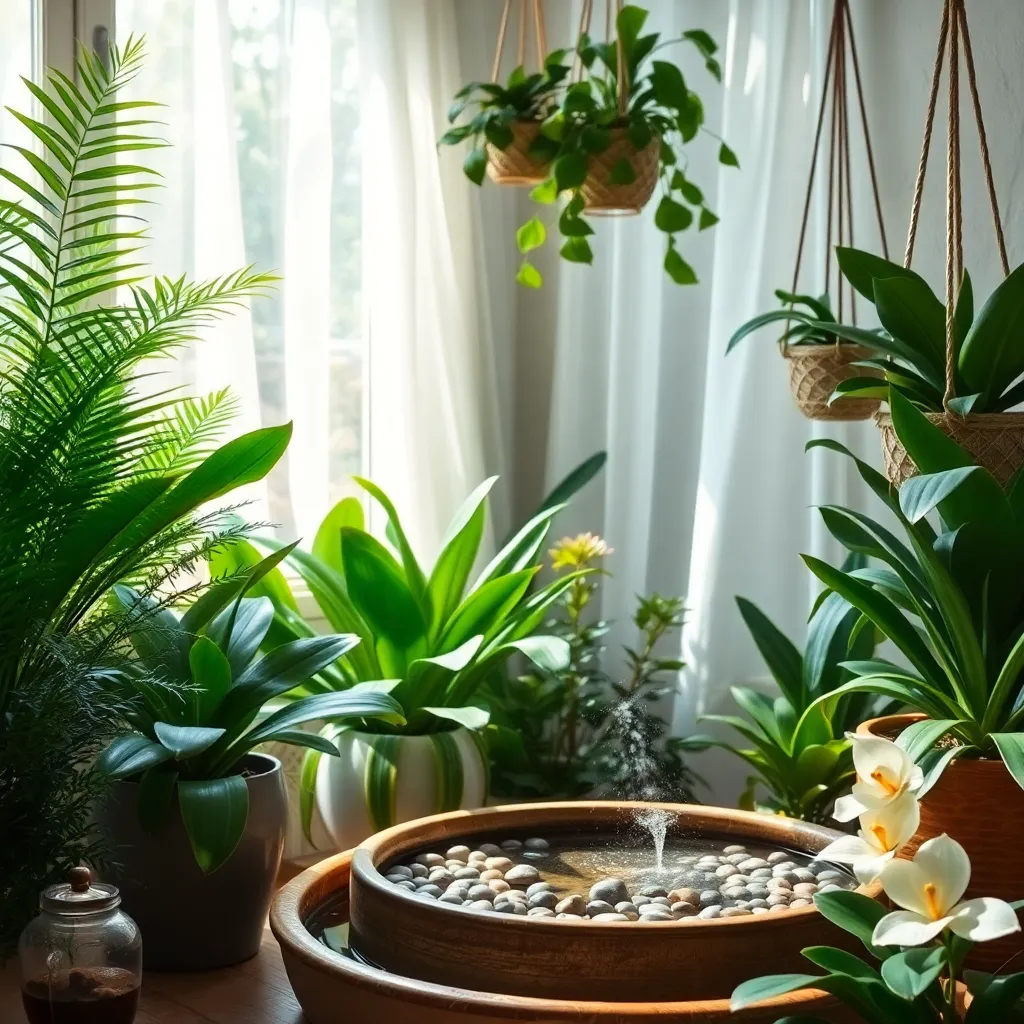
To help your indoor plants thrive during winter, it’s important to increase humidity levels in your home. Many houseplants, particularly tropical varieties like ferns and orchids, need higher humidity to mimic their natural environments.
One simple way to boost humidity is by grouping plants together. This creates a microclimate where moisture released from each plant helps the others, enhancing overall humidity.
Consider using a humidifier in the room with your plants, especially if you notice browning leaf tips or increased leaf drop. Set the humidifier to maintain a humidity level of around 40-60%, which is ideal for most indoor plants.
For a cost-effective solution, place a tray filled with water and pebbles under your plants. Ensure the pots sit on the pebbles and not directly in the water to prevent root rot, which can occur if the soil remains too wet.
Adjust Light Exposure
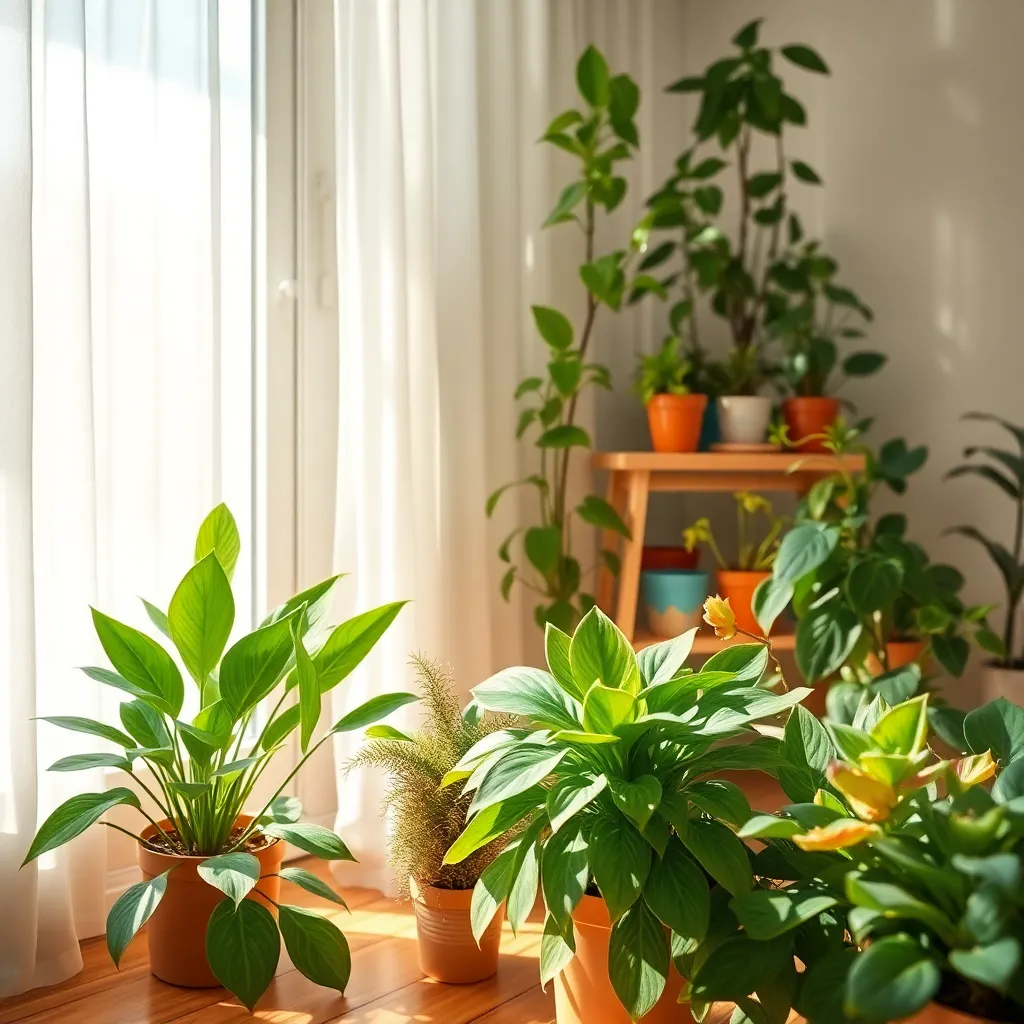
During winter, indoor plants often struggle to get enough light due to shorter days and weaker sunlight. It’s crucial to position your plants closer to windows to maximize their exposure to natural light, particularly south-facing windows that receive the most sunlight.
Consider rotating your plants weekly to ensure all sides receive equal light, promoting even growth. If natural light is insufficient, supplement it with artificial grow lights to support your plants’ photosynthesis needs.
Choose LED grow lights, as they are energy-efficient and provide the full spectrum of light needed for plant growth. Position these lights about 12 to 18 inches above your plants, and keep them on for around 12 to 16 hours daily to mimic natural daylight.
For those with limited window space, grouping plants with similar light requirements can help optimize the available light. Monitor your plants closely for signs of light stress, such as yellowing leaves or legginess, and adjust their position or lighting conditions accordingly.
Inspect for Pests Regularly
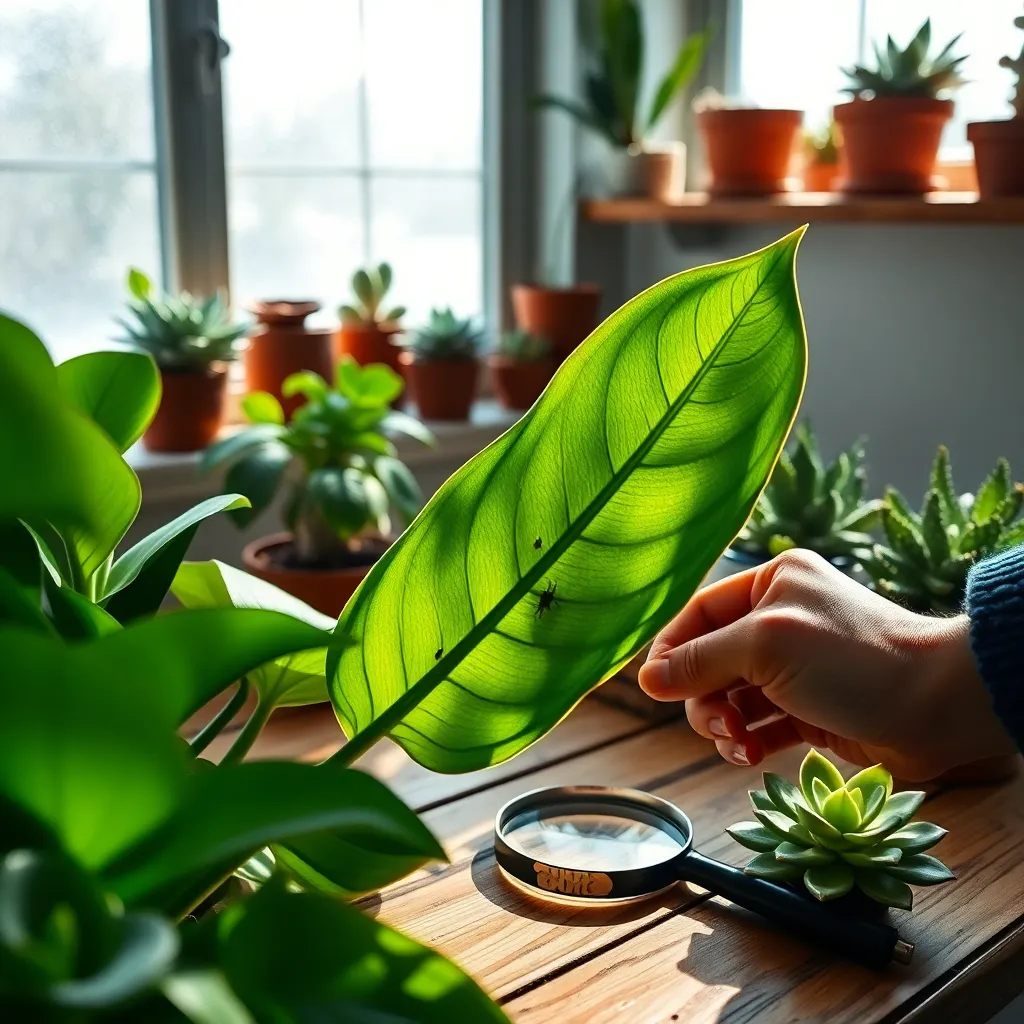
Checking your indoor plants for pests regularly is crucial during the winter months. As the environment changes, plants can become more susceptible to infestations from common indoor pests like spider mites, aphids, and mealybugs.
Begin by closely inspecting the leaves, stems, and soil surface of each plant. Use a magnifying glass to spot smaller pests that might otherwise go unnoticed.
Early detection is key to managing pest problems before they escalate. Once identified, you can use a gentle insecticidal soap or neem oil to treat affected areas.
Pests often thrive in dry conditions, so maintaining optimal humidity can help deter them. Consider using a humidifier or placing a tray of water near your plants to increase moisture levels in the air.
For more advanced gardeners, periodically rinsing plant foliage in lukewarm water can help dislodge pests. This method is particularly effective for plants like ferns and palms that can tolerate higher humidity.
Keep an eye out for signs of distress, such as yellowing leaves or stunted growth, which may indicate a pest issue. Addressing these symptoms early can save your plants from more severe damage.
Prune and Clean Plants
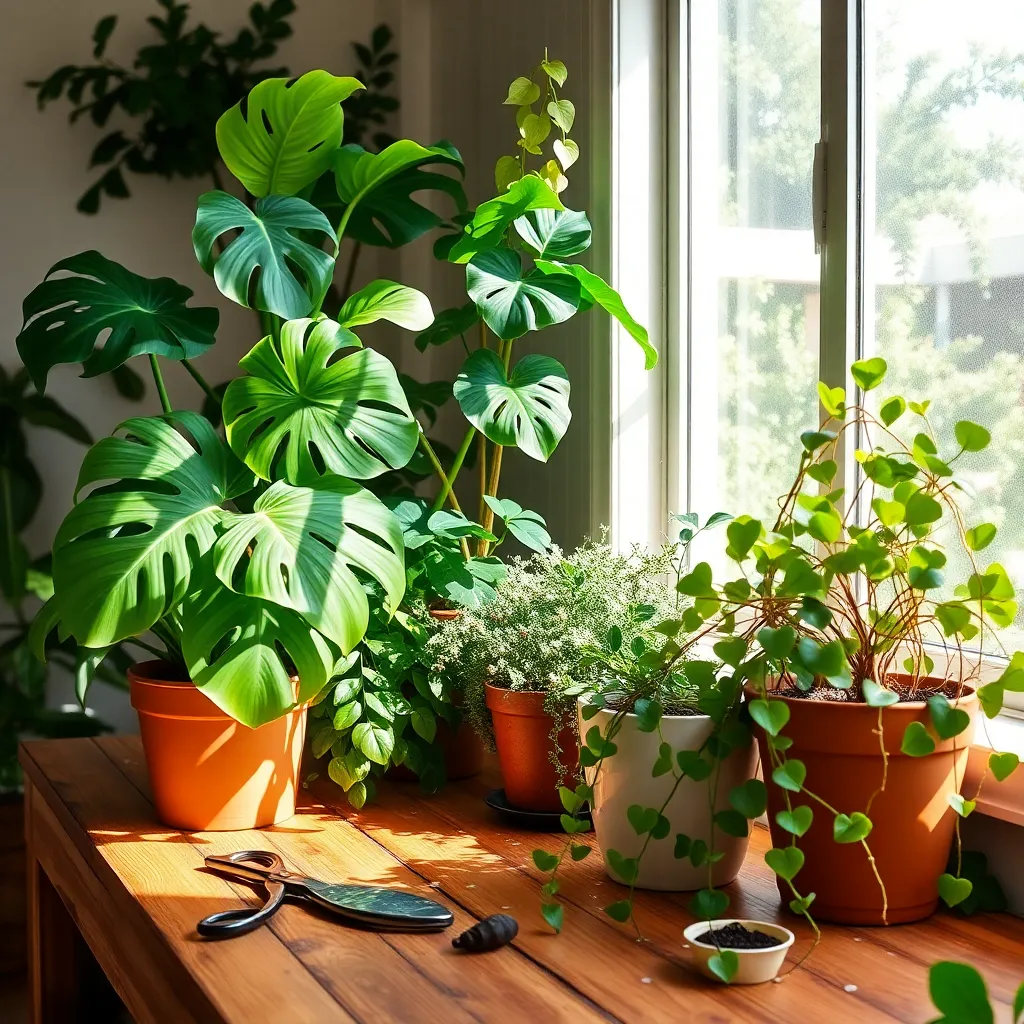
Winter is an ideal time to prune and clean your indoor plants, as many enter a period of dormancy. Regular pruning helps maintain their shape and encourages healthy growth when spring arrives.
Begin by removing any dead or yellowing leaves, as these can harbor pests and diseases. Use sharp, clean scissors or pruning shears to make precise cuts, and make sure to disinfect them between plants to prevent the spread of any potential pathogens.
Next, focus on trimming back any leggy growth, which is common in lower light conditions during winter. Cutting back to a node or leaf junction helps stimulate bushier growth and makes your plants look fuller.
Don’t forget to clean the leaves of your plants gently to remove dust that can accumulate over time. Use a soft, damp cloth or a gentle spray of water, especially for plants with larger leaves, to keep the surface clean and allow for better photosynthesis.
For advanced care, consider using a light application of horticultural oil after pruning to protect against pests. This is particularly effective for plants like ficus and rubber trees, which are prone to scale and mites.
Keeping your plants pruned and clean not only helps them thrive during winter but also prepares them for vigorous growth in the coming spring. By following these simple steps, you can ensure your indoor garden remains healthy and vibrant all year round.
Conclusion: Growing Success with These Plants
As we embrace the cozy winter months, nurturing your indoor plants can beautifully mirror the care and attention needed in any thriving relationship. In this article, we’ve explored five key concepts that not only ensure your plants flourish but also offer valuable insights into fostering healthy connections. First, recognize the importance of adjusting to your partner’s seasonal needs just as you would adjust light levels for your plants. Second, maintain consistent communication, much like regular watering schedules. Third, appreciate the value of personal space, akin to allowing proper airflow around your plants. Fourth, address issues early, much like inspecting for pests. Lastly, be patient and gentle, as growth often happens quietly beneath the surface.
Now, take immediate action: apply one of these concepts to your personal relationships today, whether it’s initiating a heartfelt conversation or simply listening more intently. Remember, relationships, like plants, require ongoing commitment and care.
Save this article as your go-to guide for nurturing both your indoor garden and your personal connections. As you continue to invest in these relationships, you’ll cultivate an environment ripe for growth and mutual success. Here’s to a winter filled with warmth, love, and flourishing bonds.
